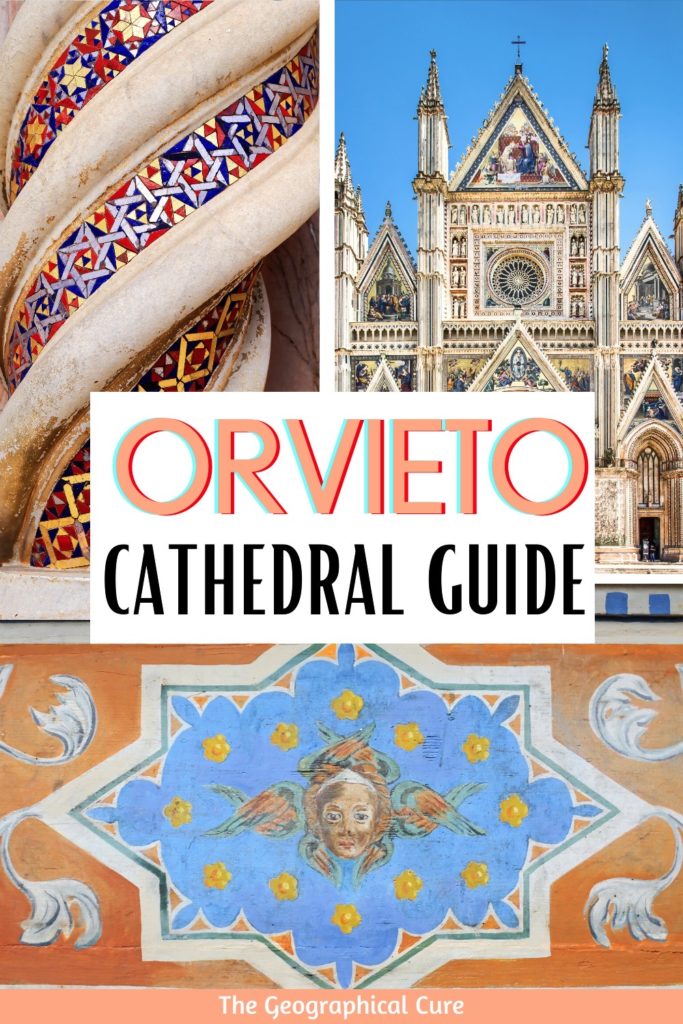The medieval town of Orvieto is perched on a plateau above a green wine- growing valley. Its piece de resistance is its magnificent cathedral, a marvel of theatricality.
Begun in 1290, Orvieto Cathedral is adorned inside and out with the best Italian art on offer at the time. It’s awash in color with a riveting ensemble of spires, spikes, golden mosaics, statuary, stained glass, and black and white striped marble.
And that’s just the facade.
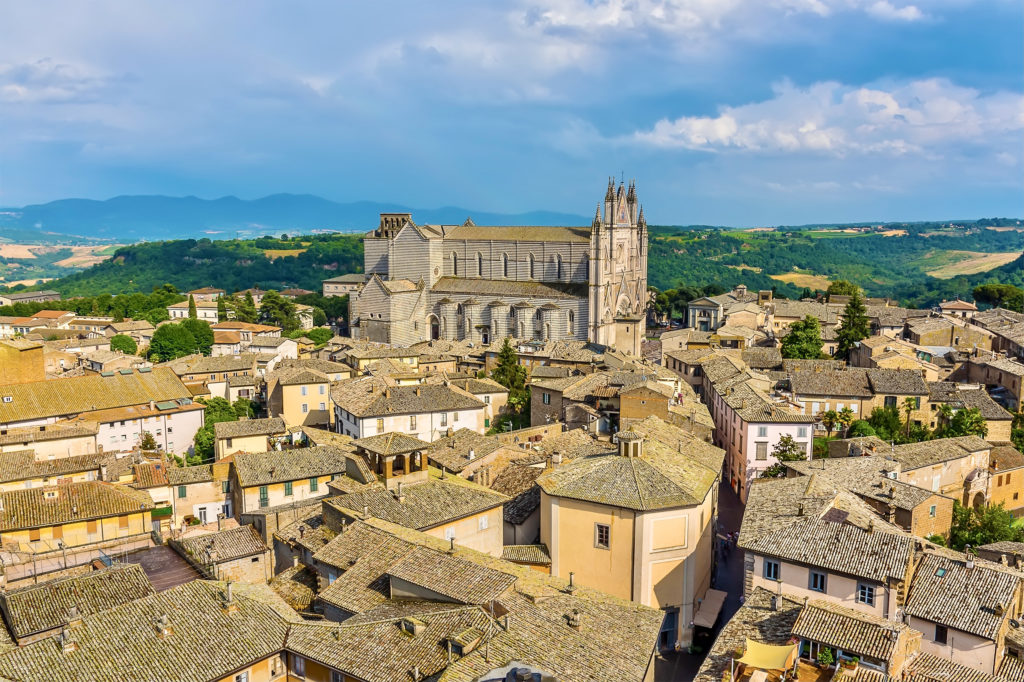
Inside, there’s a chapel containing a holy relic and one covered in stunning early Renaissance frescos that influenced Michelangelo.
History of Orvieto Cathedral
The Duomo di Orvieto was built to celebrate a miracle, one with the allure of a medieval romance. The year was 1263.
A rebel priest in the neighboring town of Bolsena had lost his belief in the Catholic dogma of transubstantiation. This doctrine holds that the host, when consecrated during mass, is the actual body of Christ.
But, one day, while performing the Eucharist ritual, blood began to drip from the host he held up and stained the altar cloth. That changed the priest’s mind in a jiffy.
When the pope, Urban IV, heard of the miracle, he embraced it with fervor. He announced to the world that a major miracle had taken place.
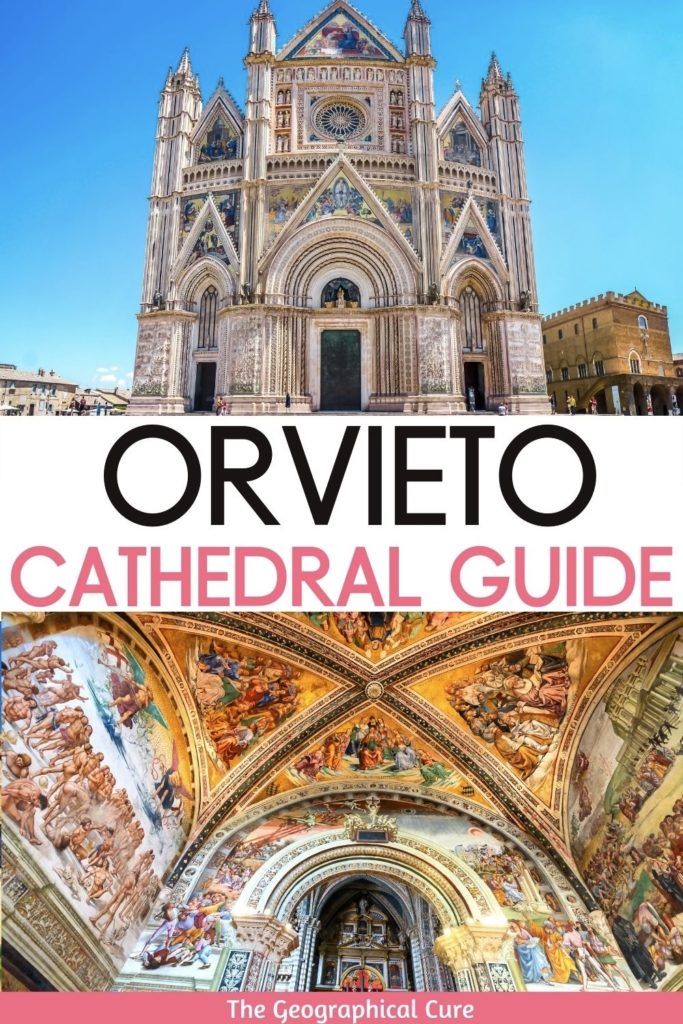
What to do next? Well, since the pope was residing in Orvieto (his preferred getaway spot), he decided to build a mighty cathedral to enshrine the precious relic.
The pope also declared a solemn feast day now as Corpus Christi. This tradition is still celebrated in Orvieto with grand processions and medieval costumes in early summer.
The first stone of the cathedral was laid in 1290 by Pope Nicholas IV. As building proceeded, no expense was spared.
The church began in a Romanesque style, but gradually became Gothic as time passed. In the early 1300s, the Sienese sculptor and architect Lorenzo Maitani was called in to work his magic.
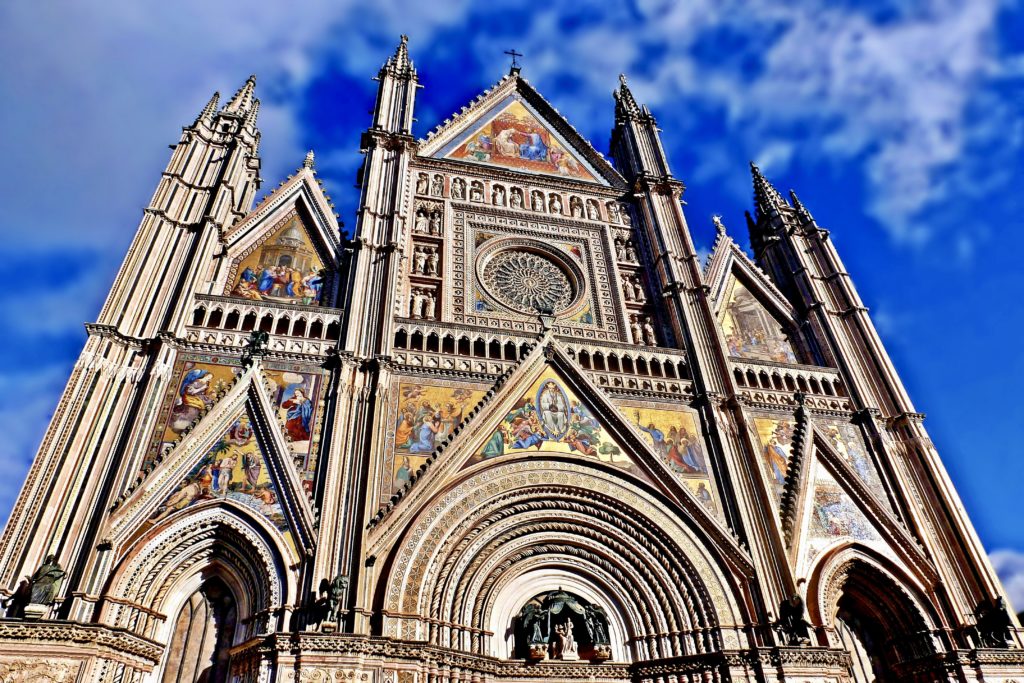
He reinforced the external walls with flying buttresses, within which two chapels were set. Maitani also enlarged the transept and installed the stained glass windows in the apse.
In 1310, he began work on the sublime facade, which I discuss in detail below.
Numerous architects followed Maitani. But none strayed from his vision for the facade.
Andrea di Cione, known as Orcagna, was responsible for the magnificent rose window and the mosaics. The rose window was struck by lightening in 1795, shattering the medieval stained glass.
In the 17th and 18th centuries, the church, like so many others, was Baroque-ified. But the Baroque decorations were eventually removed and the cathedral was restored to its original Gothic style.
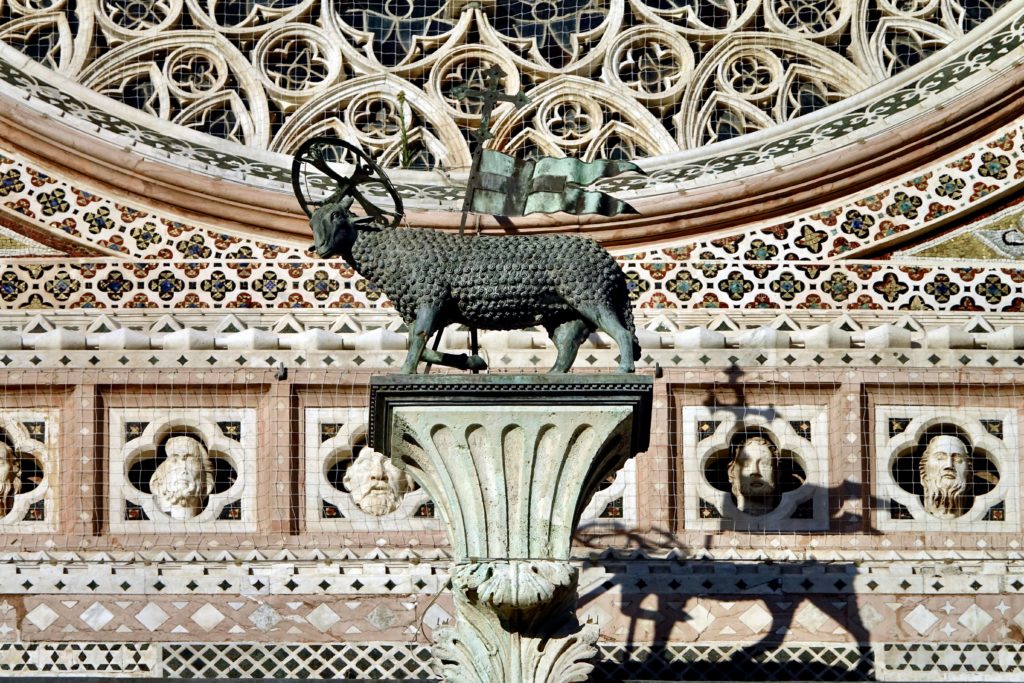
Guided Tours Of Orvieto Cathedral
I definitely suggest you get a guided tour so you’ll know exactly what you’re seeing at the cathedral. Unless your’e an expert, the images and iconography require some explanation.
I booked a 2.5 hour guided private walking tour. My guide was Emma and she was excellent, making the cathedral and its beautiful art works come to life.
You can also book a 3 hour small group walking tour that includes the cathedral, the old town, and Orvieto’s underground.
What To See At Orvieto Cathedral, The Complete Guide
Here’s what to see at the Orvieto Duomo:
1. Facade
The showy facade was designed by Maitani. It’s extraordinarily beautiful, truly one the world’s most magnificent facades. It’s almost like a precious reliquary itself.
Created by the artist Orcagna, the stunning mosaics tell the story of Mary’s life. You read them from bottom to top. You’ll see her birth, presentation at the tower, the assumption, her wedding, and her coronation in heaven (at the very top).
The cathedral has three doors. Each is surmounted with an elaborate Gothic gable.
Pinnacles rise up to form a pointy tall conical crown, which is filled with glittering mosaics. The doors almost look like side by side pyramids.
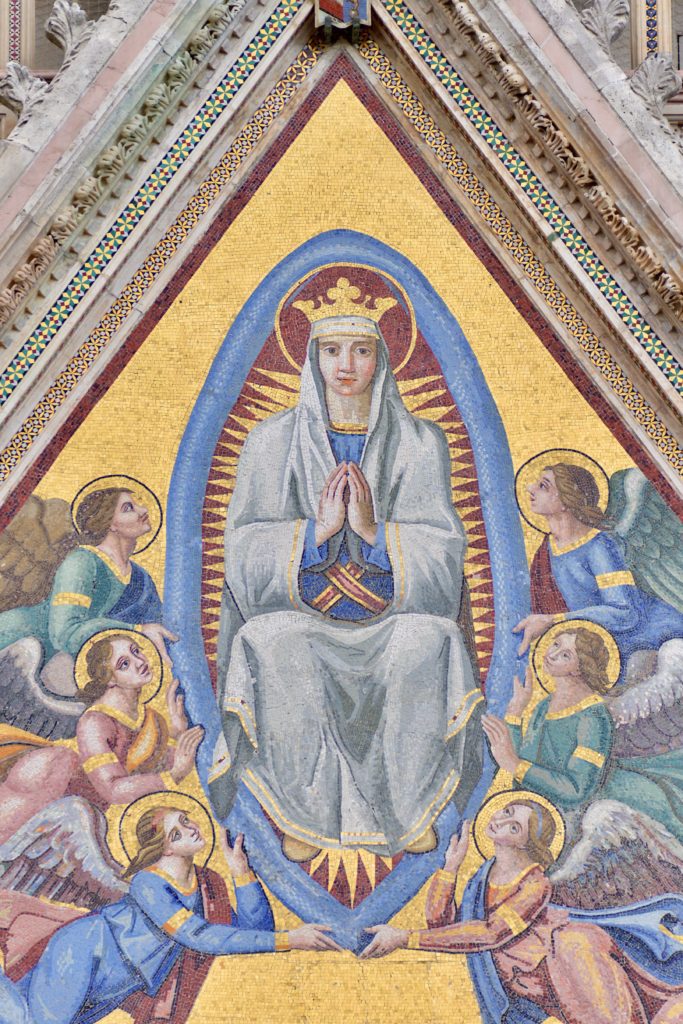
On the second level, the architect placed a circle within a square of the central panel. It’s a lacy rose window. In the middle is the head of Christ.
The square holding the window is surrounded by 52 small square niches that hold the heads of saints.
On top of that square, there are rectangular niches filled with statues of the 12 apostles. On the sides, there are niches containing figures of 12 prophets.
This is surmounted by another gable. The mosaics inside show Christ crowning the virgin.
The gables and pinnacles are edged in pink marble. The doors are surrounded by bands of marble carved to look like twisting ropes.
No two bands are alike. Each are inlaid with intricate mosaics.
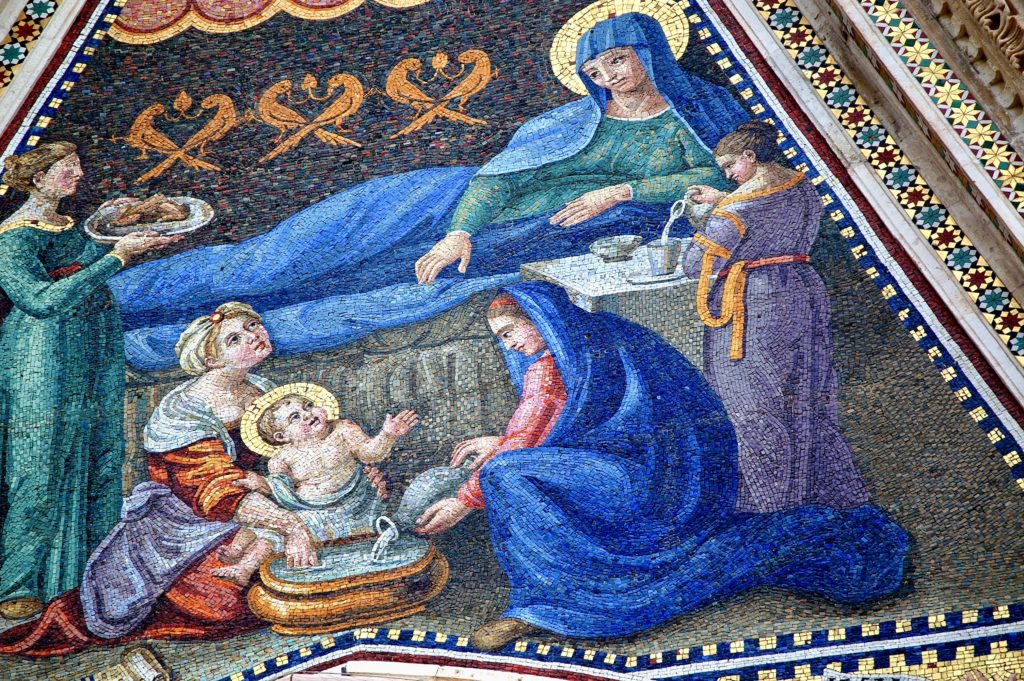
The bronze sculptures on the Duomo facade symbolize the four Evangelists — the Angel (St. Matthew), the Lion (San Marco), the Eagle (St. John) and the Bull (St. Luke). They are attributed to Maitani and his followers.
The sides of the cathedral boast a unique stone design. Builders placed locally sourced basalt and travertine rock in alternating rows to give the cathedral a striped zebra-like appearance.
The bronze doors are fairly new, installed in 1970. They replaced dilapidated wooden doors.
The locals were opposed to the new doors. Indeed, all of Italy argued about them as they sipped espresso in their cafes.
The doors were deemed too modern, despite their traditional theme. After 6 years of debate, they were installed secretly in the dead of night.
The doors were created by Emilio Greco, the best known Italian sculptor of the 20th century. Once bright green, they now have a proper patina. They depict the church’s works of mercy.
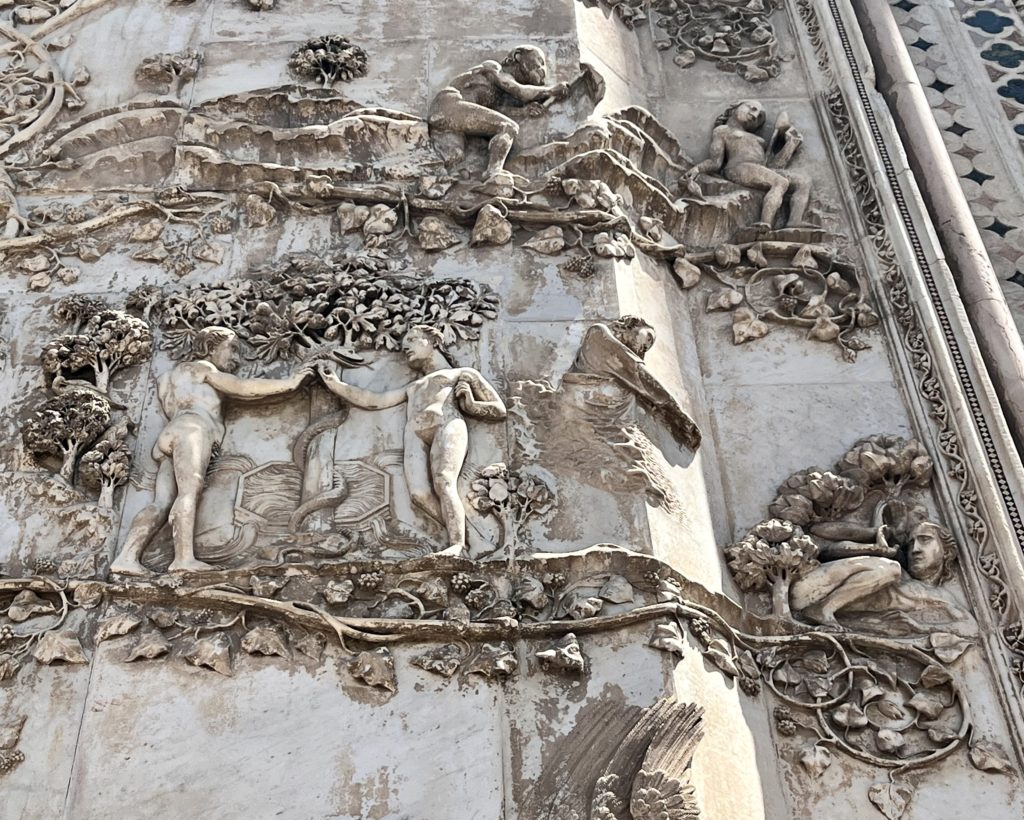
2. Pier Carvings
The four large piers between the doorways were carved in 1298-1320. Intallation began in 1331.
They are absolutely extraordinary. The bas reliefs are intricate and delicate.
They depict scenes from Genesis and the New Testament. Maitani worked on some of the carvings, especially the ones on the left side.
The reliefs are beautifully rendered and full of emotion. They’re among the most famous and important sculptures from the 14th century.
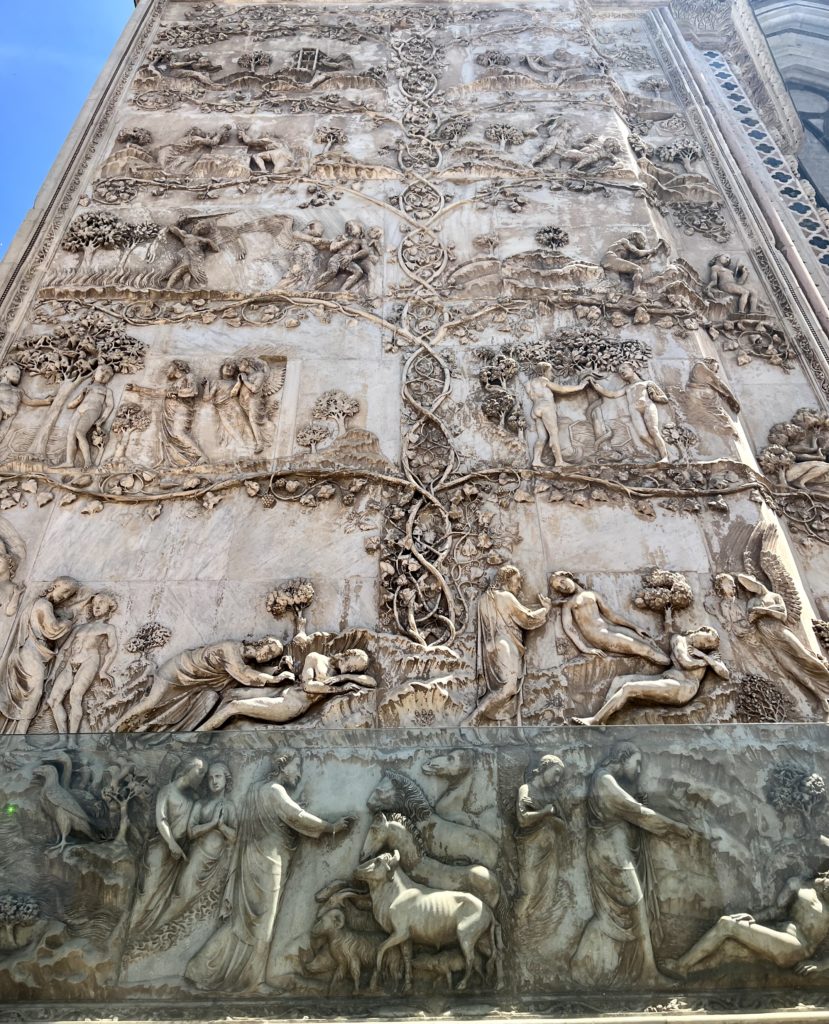
You can see God creating the animals — lion, camel, horse, ram — and finally man. You can see Eve being created from Adam.
There are visions of the prophets, the annunciation, the nativity, and the crucifixion.
Perhaps the most lively image is the Last Judgment. The resurrected dead seem joyous as they climb out of their graves. In hell, the damned are attacked by demons and a sharp toothed dragon.
The intent for creating the bas reliefs was to provide a “poor man’s bible,” so that those that couldn’t read would know the Bible tales.
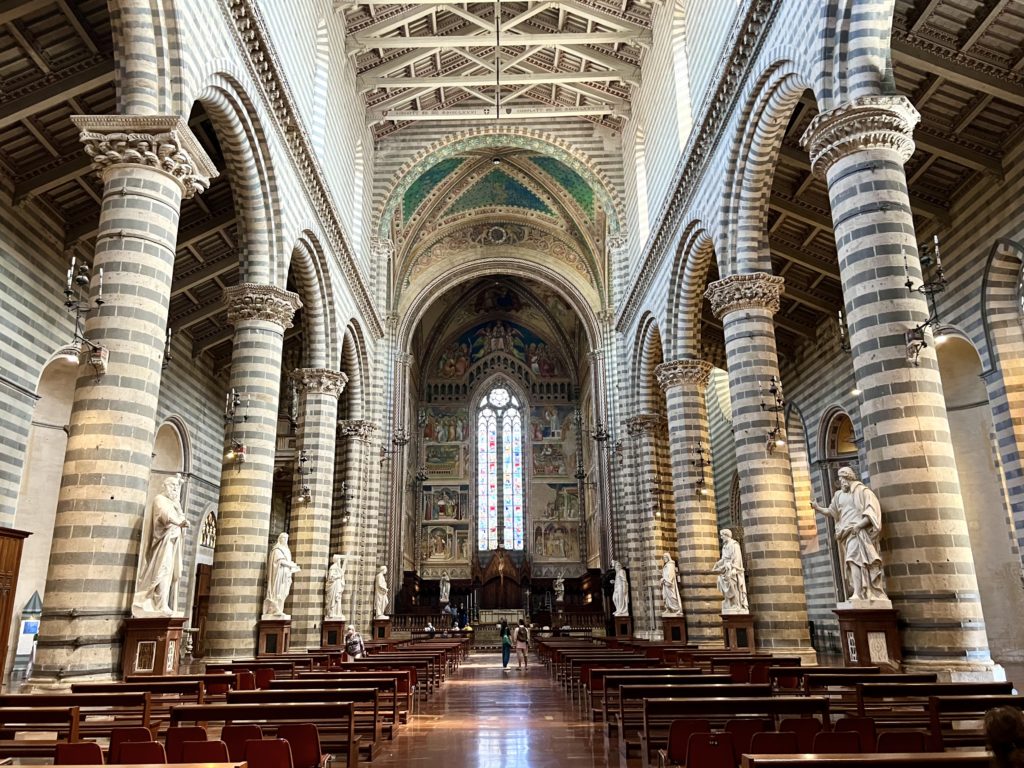
2. Interior
As you enter the cathedral, you’ll find an immensely long nave. It’s made longer with gray and white stripes.
There are aisle naves on each side, separated with an arcade of columns. The ceiling seems impossibly high.
There are 12 massive striped columns, each with different capitals. In between are statues of 12 saints. The statues were returned to the cathedral in 2019 after 122 years of exile.
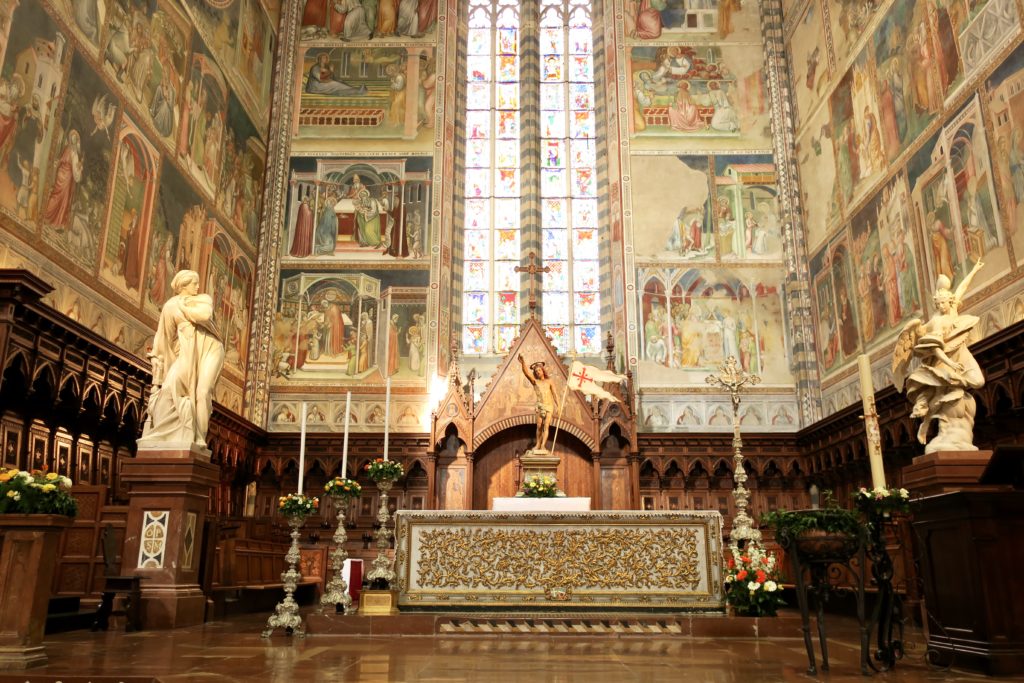
There was originally a rood screen in the nave. But that was removed by Pope Paul III.
You visit begins by walking counter clockwise up the right aisle to the San Brizio Chapel.
At the back of the church is the main altar. Narrow stained glass windows are flanked by frescos painted by Ugolino di Prete Ilario. A crucifix by Maitani hangs above the altar.
The windows date from 1328-34 and were created by master glass artist Giovanni di Bonino da Assisi.
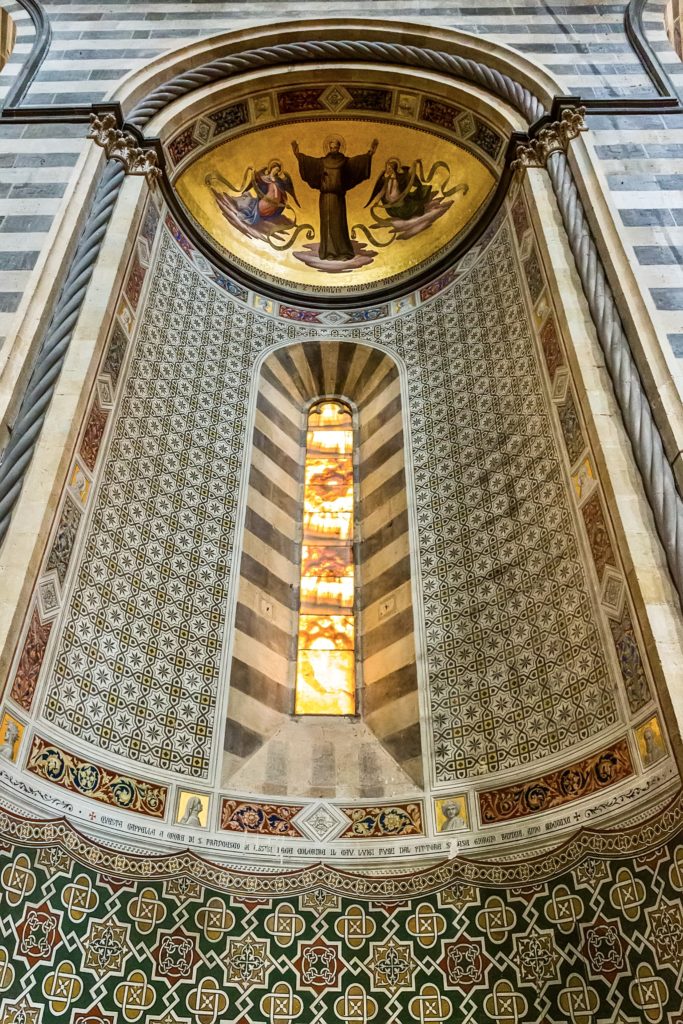
3. Alabaster Windows
The interior windows of the cathedral are made of translucent alabaster, with veins that red, gold, and orange.
They bathe the interior with a soft golden light. Alabaster is extremely delicate. So some of the windows have been partially replaced with stained glass.
4. Baptismal Font
The cathedral’s baptismal font is a work of art too. Lions support the base and the red marble basin. Above is an intricately carved marble work, which was completed in the early 1400s.
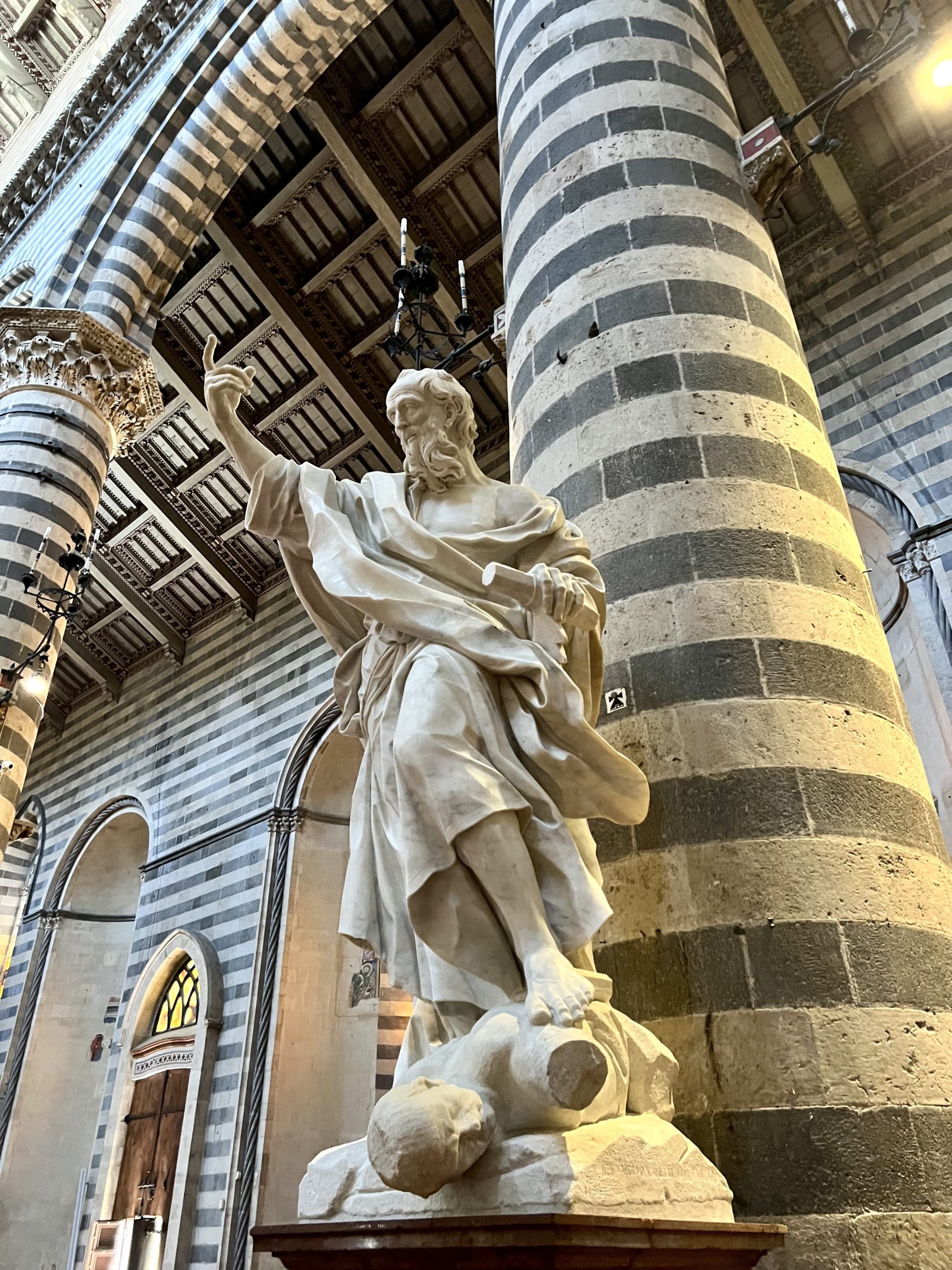
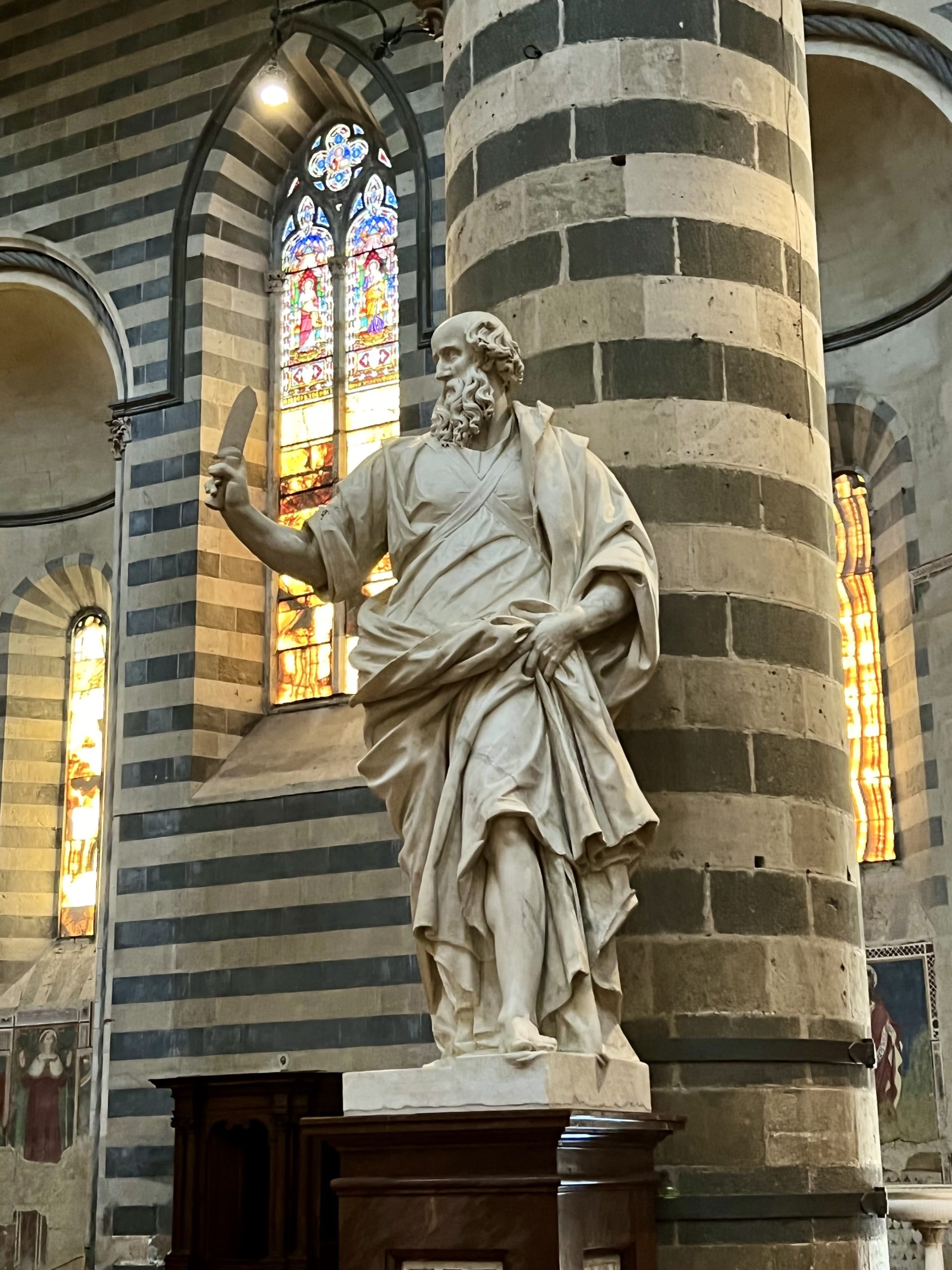
5. Sculptures
The Duomo houses some masterpieces of sculpture. The most famous is Ippolito Scalza’s Pieta.
My guide tried to suggest that it was even better than Michelangelo’s Pieta in St. Peter’s Basilica because there were more figures.
Having seen them both, I shrugged off the comment as local zealousness. The sculpture is much more overly theatrical than Michelanglo’s more poignant Pieta.
The sculpture was created from a single block of marble. It represents, with great drama, the moment after Christ’s deposition from the cross.
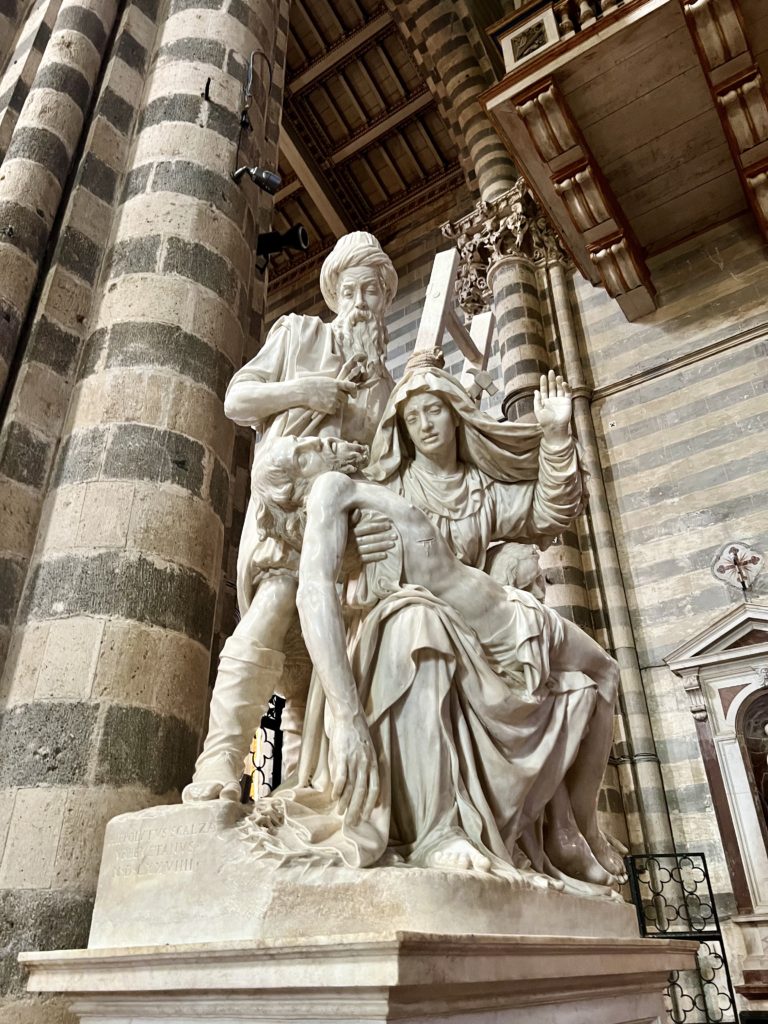
On the sides of the altar, there are two statues of importance.
One is statue of San Gabriele Arcangelo Annunciante, which is recognized by art historians as the first Baroque sculpture. The other is a Madonna from 1608.
There’s also a spectacular group of 12 sculptures of the apostles on bases between the columns.
They were carved in the 16th and 17th century by by Francesco Mochi, Simone Mosca, Giambologna, Ippolito Scalza, and Raffaello da Montelupo.
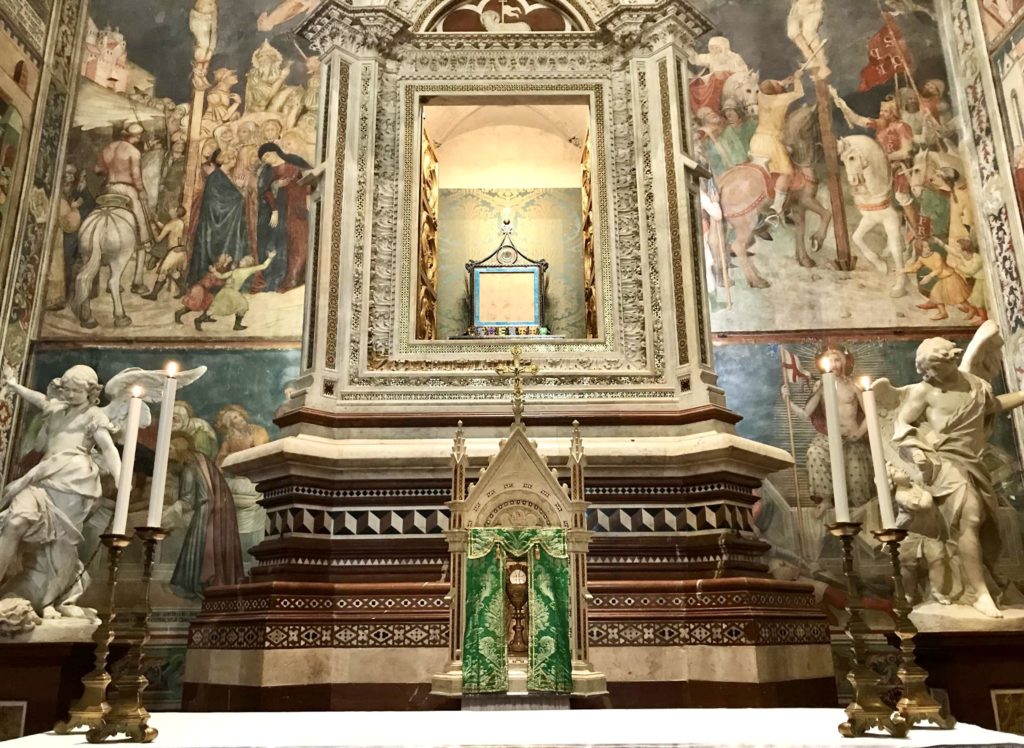
6. Chapel Of The Blessed Corporal
This chapel, to the left of the altar, is dedicated to the cathedral’s foundation miracle. You can peer at it from inside the cathedral. But to go inside, you have to go around the church to a separate side entrance.
The chapel is covered with frescos depicting the miracle of Bolsena. They were painted in 1357-63 by two local artists.
The frescos show the influence of the premiere early Renaissance artist of the day, Giotto. The most famous fresco is the Madonna dei Raccomandati painted by Lippo Memmi.
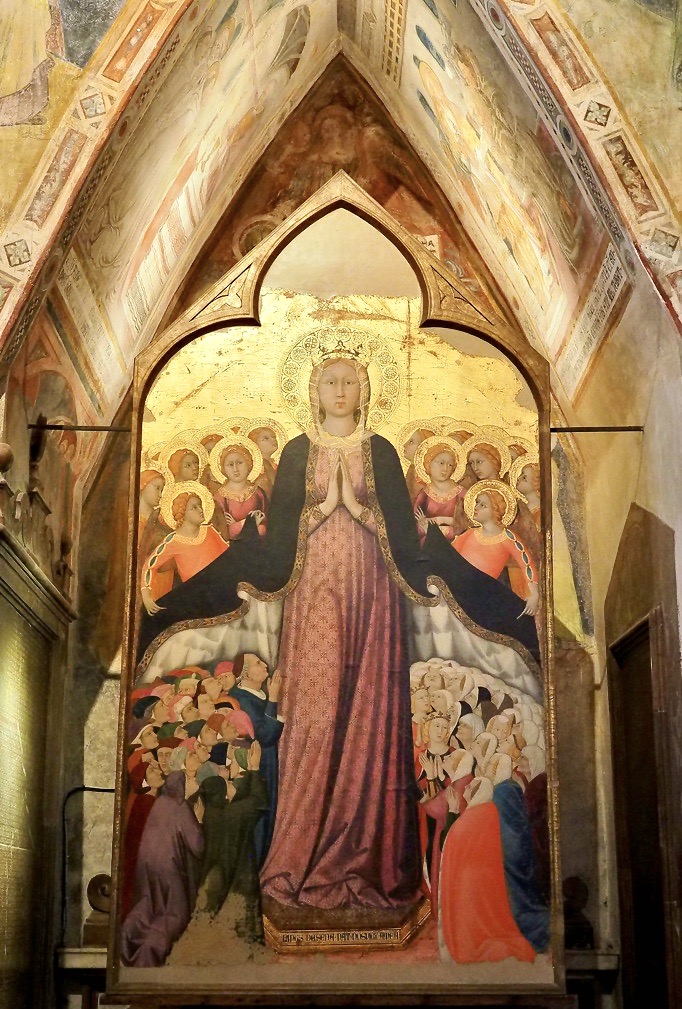
A fine marble altar holds the Reliquary of the Corporal. The reliquary houses the piece of linen altar cloth on which, legend holds, the host bled drops of Chris’s blood.
The blood stains are barely discernible by the naked eye.
But exhibits outside the chapel show the stains under UV florescence. Scientific examination has also confirmed that the stains are, in fact, blood.
The reliquary itself, made of gilded silver and enamel, is stunning. It was the master work of Sienese goldsmith Ugolino di Vieri.
7. Chapel of San Brizio
The magnificent Chapel of San Brizio is to the right of the main altar.
The frescos were begun in 1447 by Fra Angelico and Benozzo Gozzoli. The Fra Angelico pieces are Christ the Judge and Prophets in the ceiling vaults.
But the fresco cycle was mostly completed by the great Luca Signorelli, who also has a fresco in the Sistine Chapel.
The result? One of the Renaissance’s greatest fresco cycles, which decorates every inch of the chapel.
Legend holds that Signorelli wasn’t happy with his contracted for wage. To mollify him, the town gave him extra wages in white wine.
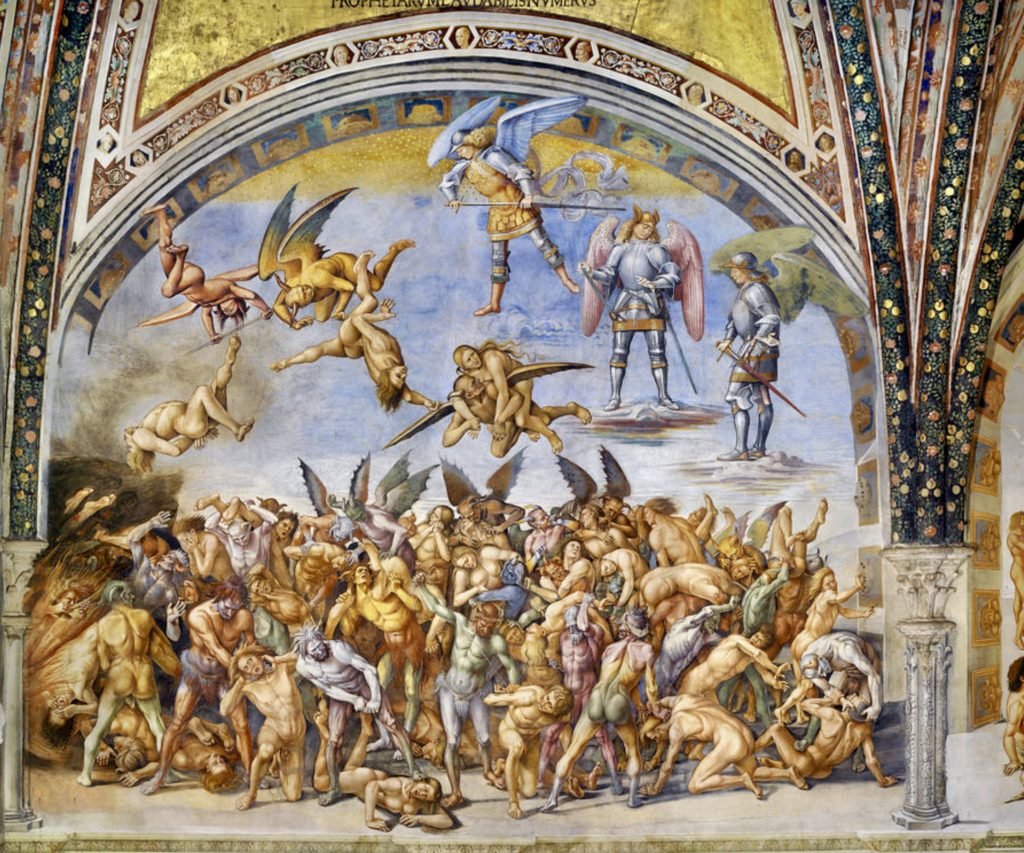
Signorelli’s San Brizio frescos are considered his masterpiece, his greatest and most complex work. With brilliant colors and sweeping designs, they’re one of the most ambitious and inventive depictions of the apocalypse and last judgment in Italian Renaissance art.
The expressive frescos depict the usual religious themes — temptation, damnation, resurrection, and salvation. They’re a searing vision of the end of the world, executed with fiendish exuberance.
The cycle consists primarily of six large compositions. Each occupies the upper parts of the walls.
The Sermon and Deeds of the Antichrist is considered the best painting, Signorelli’s magnus opus. It’s full of fantastical imagery.
In it, a false prophet is a terrifying apparition. He’s dressed in yellow (like Judas) and shown disseminating his lies to misguided listeners.
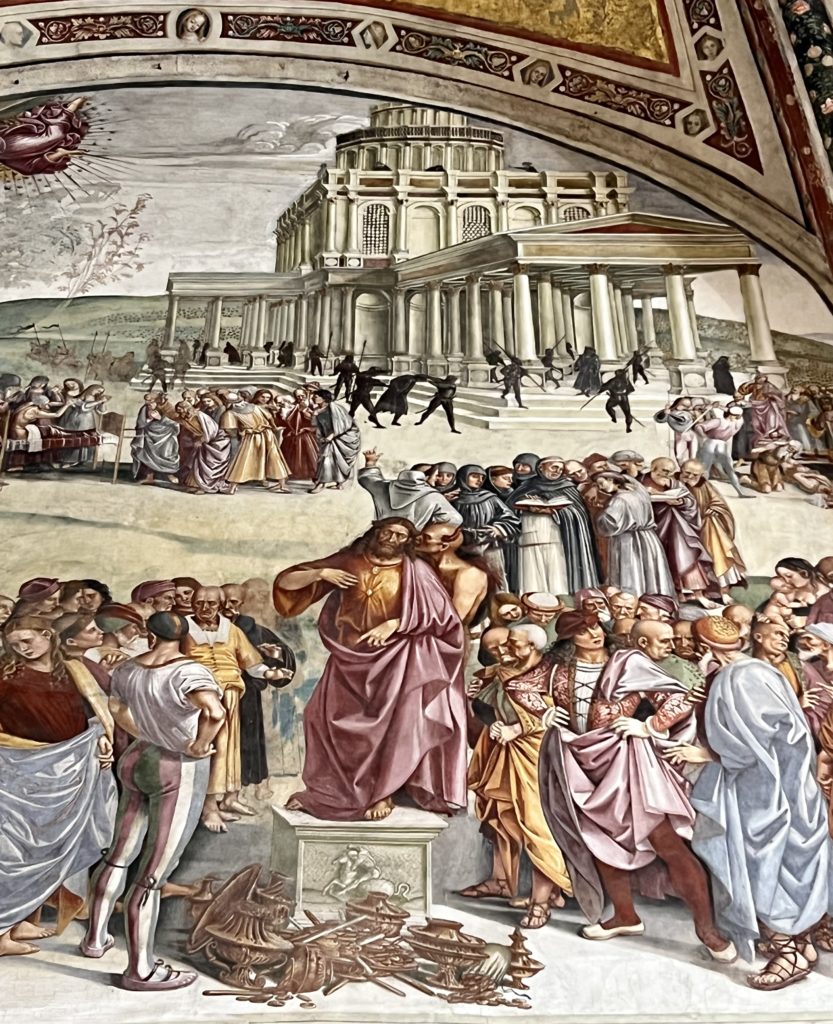
The false prophet is likely a reference to the mad monk Savonarola, who once ruled Florence until he was burned at the stake for heresy. It’s one of the only paintings of an antichrist in existence.
READ: History of the Medici
Behind the antichrist, Satan whispers in his ear, telling him what to say. His arm slips into the prophet’s robes, making them seem like they share a single arm.
All around them are scenes of depravity. But, in the end, the angel Michael smites the purveyor of lies with the sword of divine justice.
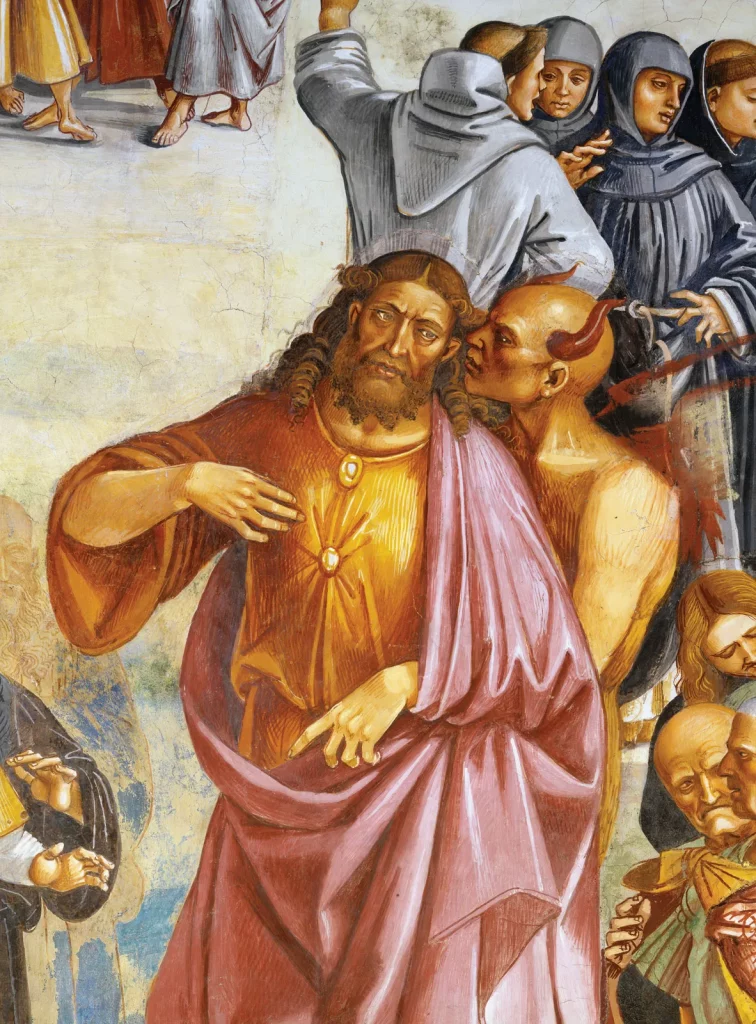
The Damned Cast Into Hell features writhing masses of human bodies, who are tortured by acid colored demons.
Nude men and women scream, their bodies contorting in pain. Demons drop asteroids. A fiery pit awaits the unfortunate souls.
The End of the World, painted over the arch of the entrance, is especially terrifying. Under dark skies, cities collapse in ruins and people flee frenetically. It seems like they might fall off the edge of the painting.
In The Resurrection of the Flesh, the dead awaken from their earthly slumber, called by two archangels. One by one, they rise up from the ground, breathing back into flesh.
The statuesque nude figures show Signorelli’s strong grasp of anatomy.
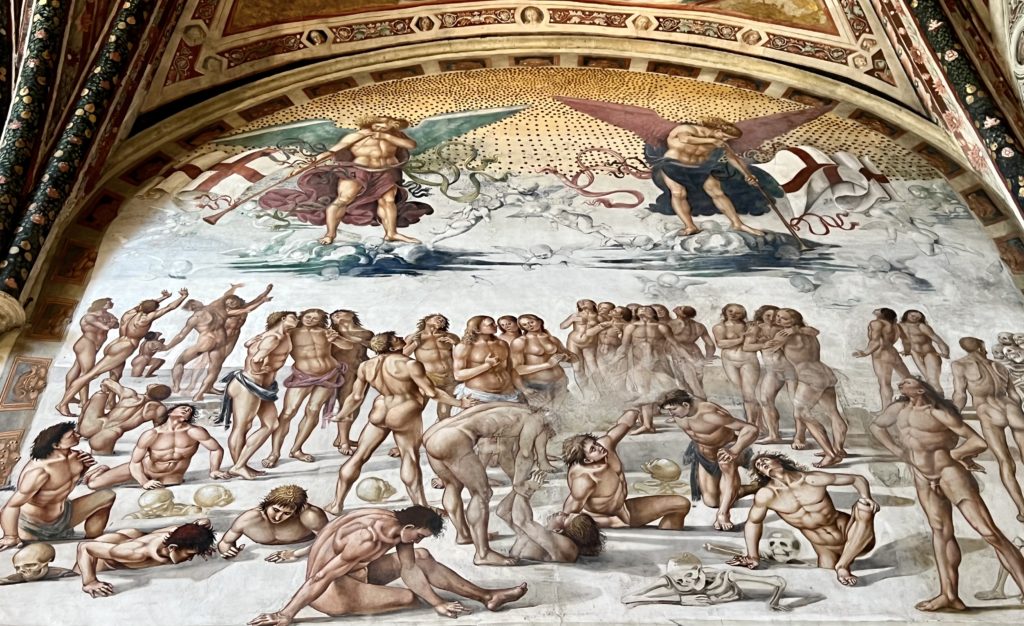
This was a Renaissance phenomenon, when artists were influenced by the rebirth of classical antiquity. There was a desire to understand the workings and dynamic movements of the human body.
According to art historian Giorgio Vasari, Michelangelo came to inspect the Signorelli’s frescos. Signorelli’s male nudes likely inspired his own apocalyptic work, The Last Judgment in the Sistine Chapel.
Many of Signorelli’s drawings for the fresco cycle are housed in Florence’s Uffizi Gallery.
The chapel also has beautiful grotesque-style frescos. They were included because of the Renaissance “fear of empty space.” They were painted by Ippolito Scalza, a pupil of Michelangelo.
In the lower part of the chapel, you’ll also find portraits set in architectural panels by Signorelli depicting the philosophers and poets of the day.
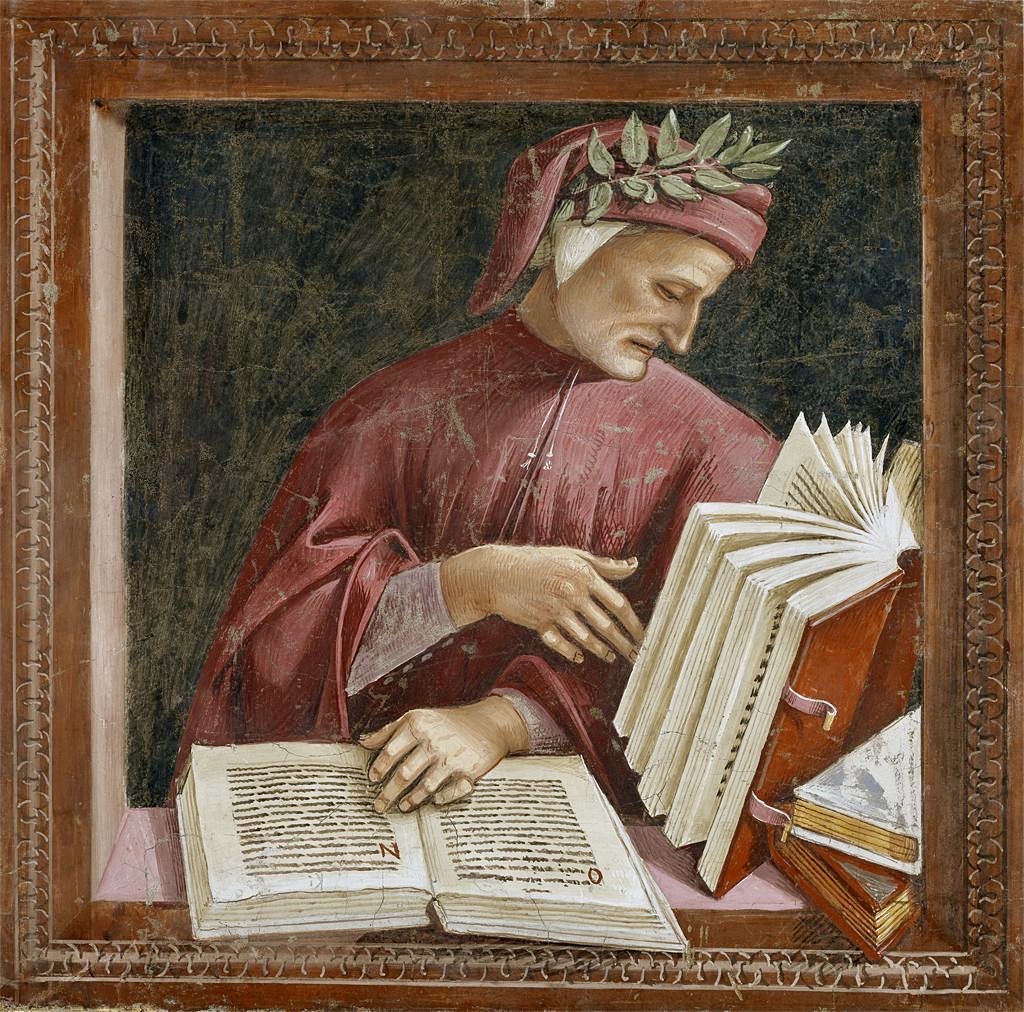
8. Cathedral Museum
The cathedral museum is known as the Museo dell’Opera del Duomo. It’s housed in a splendid Gothic palace around the corner from the cathedral. Admission is included in your cathedral ticket.
You can inspect 2,000 works of art preserved from the church from the 13th to the 17th century.
The best works are by Andrea Pisano and Simone Martini. You’ll also find paintings and sculptures by Francesco Mocchi, Ippolito Scalza, Cesare Nebbia, and Arnolfo di Cambio.
There’s a collection of exquisite ecclesiastical vestments. There’s also a parchment drawing of the cathedral facade by Maitani.
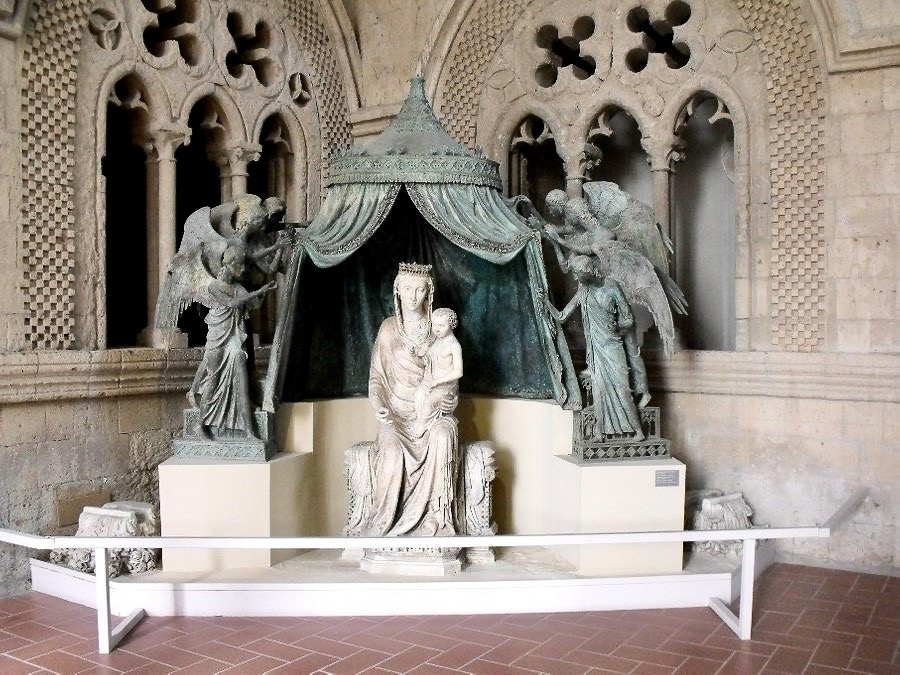
How To Get To Orvieto
Orvieto is located in southern Umbria. Orvieto is 1:25 minute drive from Rome.
Orvieto is on the main train line between Florence and Rome and about 80 miles from both cities. You can also take the high speed train from Rome Termini, which takes just over an hour. Or, from Florence, it’s 1:30 train ride.
Orvieto’s train station is at the bottom of the town. You will need to take the funicular up to the top of the old town.
You can buy a ticket in the train station. Then, walk across the parking lot to the funicular.
It will drop you at Piazza Cahen. From there, you can walk right into the centro storico.
There’s also a shuttle bus that goes to the Duomo, which is included in your funicular ticket. Validate your ticket on the bus.
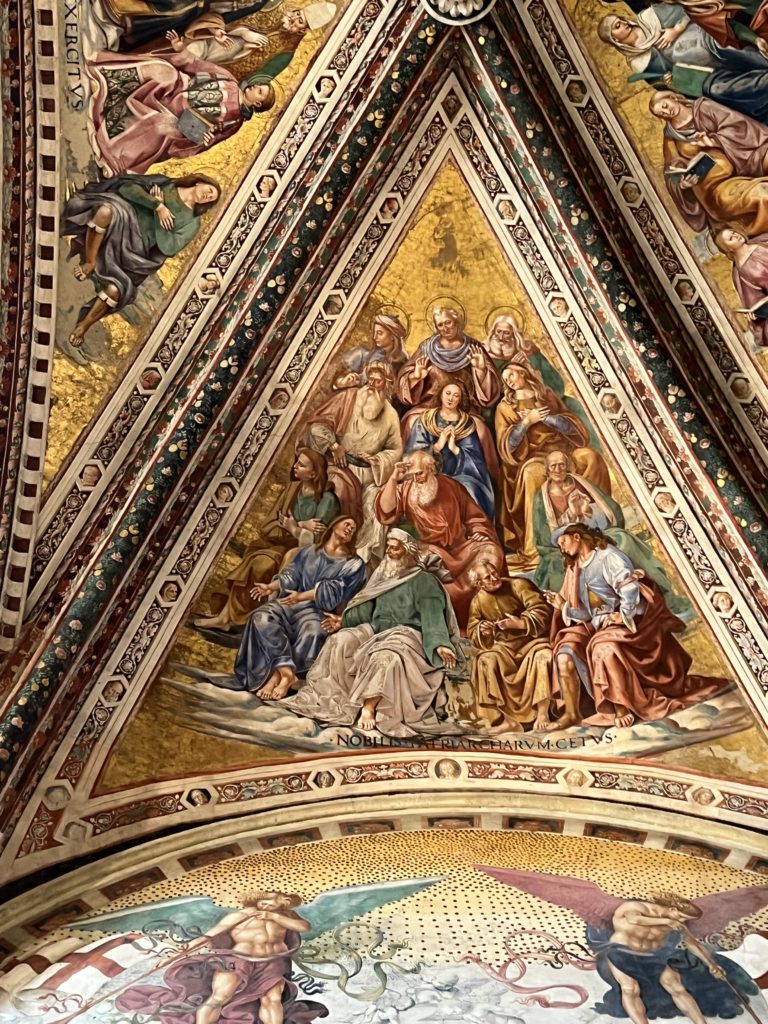
You can also drive to Orvieto, which is what I did. If you’re driving, know that the center is closed to traffic. You need to park outside the historic center.
As I approached Orvieto, I put “public parking” in my GPS. I parked in a lot just before Via Roma in Piazza Cahen.
It’s a “pay and display” parking lot. You buy your ticket using cash or a credit card at the kiosk machine. Then, display the ticket in your window.
You can also park in the lower town and take the funicular up. In high season, this is likely the best option.
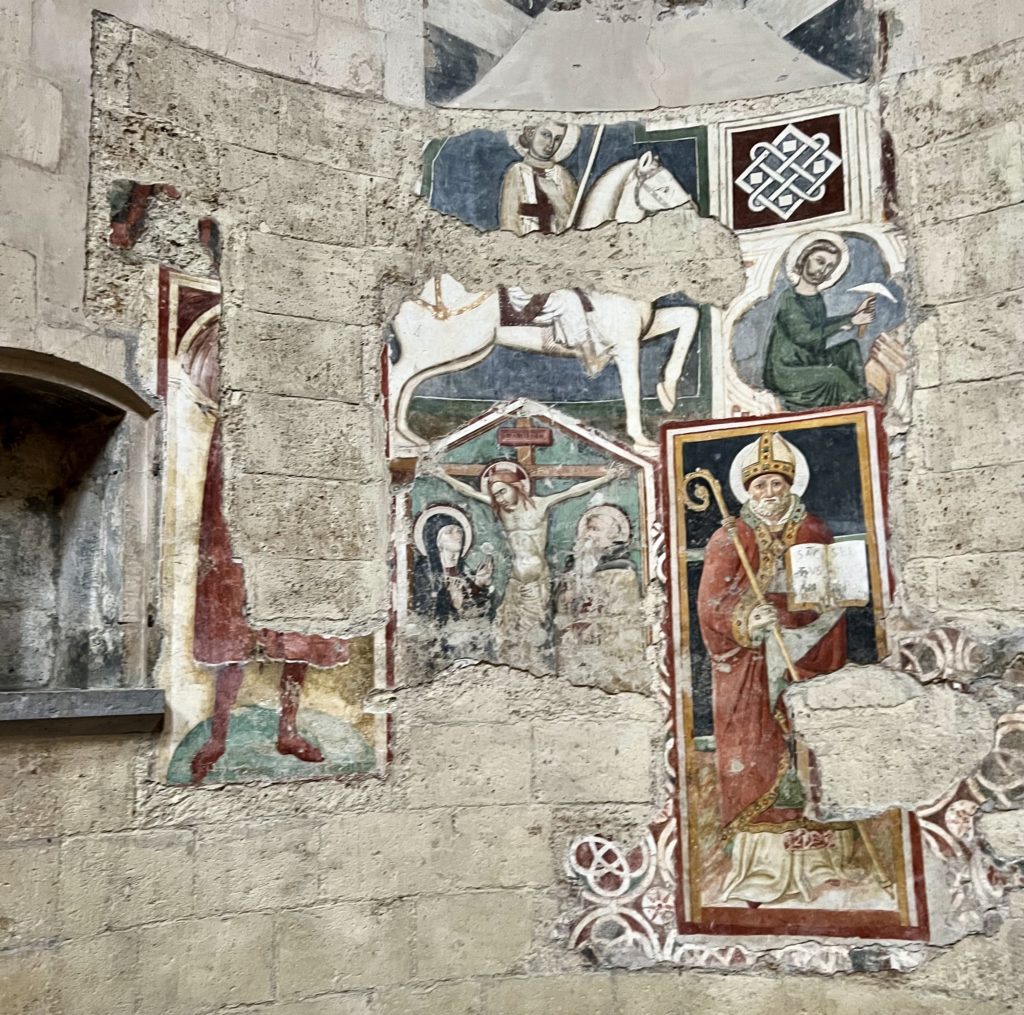
Practical Information And Tips For Visiting Orvieto Cathedral
Address: Piazza del Duomo, 26, 05018 Orvieto TR, Italy
Hours:
The church is open from 9:30 am to 7:00 pm in high season, closing at 5:00 pm from Nov to Feb and at 6:00 pm from Mar to Oct. On weekends, it’s open from 1:00 pm to 5:30 pm, closing at 4:30 pm from Nov to Feb.
The cathedral museum follows the same opening schedule as the cathedral. Times may vary slightly depending on whether there is a service in progress.
Ticket Price: € 5,00. You can buy tickets until 30 minutes before closing time. The ticket includes entry to both the cathedral and the cathedral museum.
I hope you’ve enjoyed my guide to Orvieto Cathedral. You may enjoy these other Italy guides:
- 5 day itinerary for Rome
- Hidden gems in Rome
- 1 day itinerary for Vatican City
- 3 day itinerary for Florence
- 2 day itinerary for Venice
- 1 day itinerary for Milan
- 1 day itinerary for Siena
- Things To Do In San Gimignano
- Things To Do In Assisi
- 10 day itinerary for Tuscany
- 10 day itinerary for Italy’s classic cites
- 11 ways to spend 1 week in Italy
- 30 beautiful towns in Italy
If you need a guide to Orvieto Cathedral, pin it for later.
